Omega’s release of the Speedmaster Moonwatch 321 in 2020 revived a true legend. The new model, including its movement, is a replica of the Speedmaster Ref. 105.003 that Ed White wore on the first American spacewalk in 1965 and Gene Cernan on the last moonwalk in 1972.
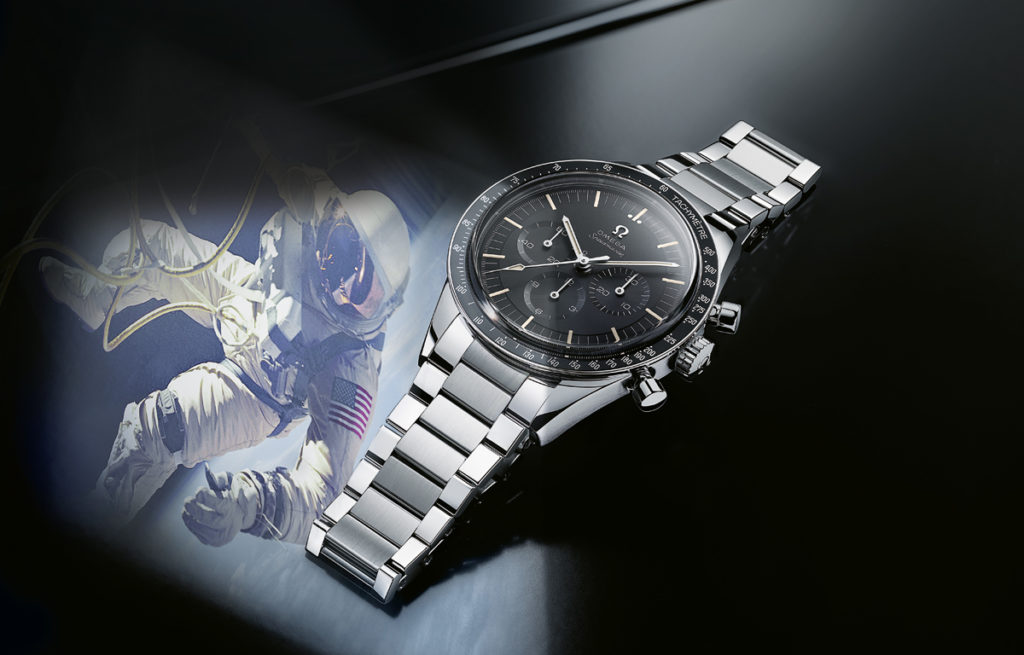
On June 3, 1965, U.S. astronaut Ed White ventured out of his space capsule during the Gemini 4 mission (see photo above). In his right hand, he held a maneuvering device with an oxygen nozzle, which he used three times to propel himself to the end of his eight-meter-long tether. After expending the last remaining oxygen in the control device, he had to pull himself back into the capsule hand over hand along the lifeline.
Over the left sleeve of his spacesuit, White wore an Omega Speedmaster Ref. 105.003 attached to an extra-long Velcro textile strap. This model was produced from 1964 to 1969 and was powered by Omega’s hand-wound Caliber 321 Ref. 105.012. This is the same movement that ticked inside the watch on Buzz Aldrin’s wrist during the first moon landing in 1969. A few minutes earlier, Neil Armstrong became the first person to walk on the moon, but he left his Speedmaster behind in the lunar lander because the vessel’s onboard electronic clock had malfunctioned.
During the six (successful) lunar landings that took place between 1969 and 1972, only three Speedmaster references were worn on the moon, and Caliber 321 powered all of them. Technically modified follow-up Caliber 861 premiered in 1968, but it didn’t tick inside the watches that had been certified for the Apollo missions so it never accompanied an astronaut onto the surface of the moon.
In Caliber 861, a less costly coulisse lever replaced the traditional column wheel used in Caliber 321 and the balance’s frequency was increased from 18,000 to 21,600 vibrations per hour. The current version, Caliber 1861, debuted in 1996 and has rhodium-plated surfaces.
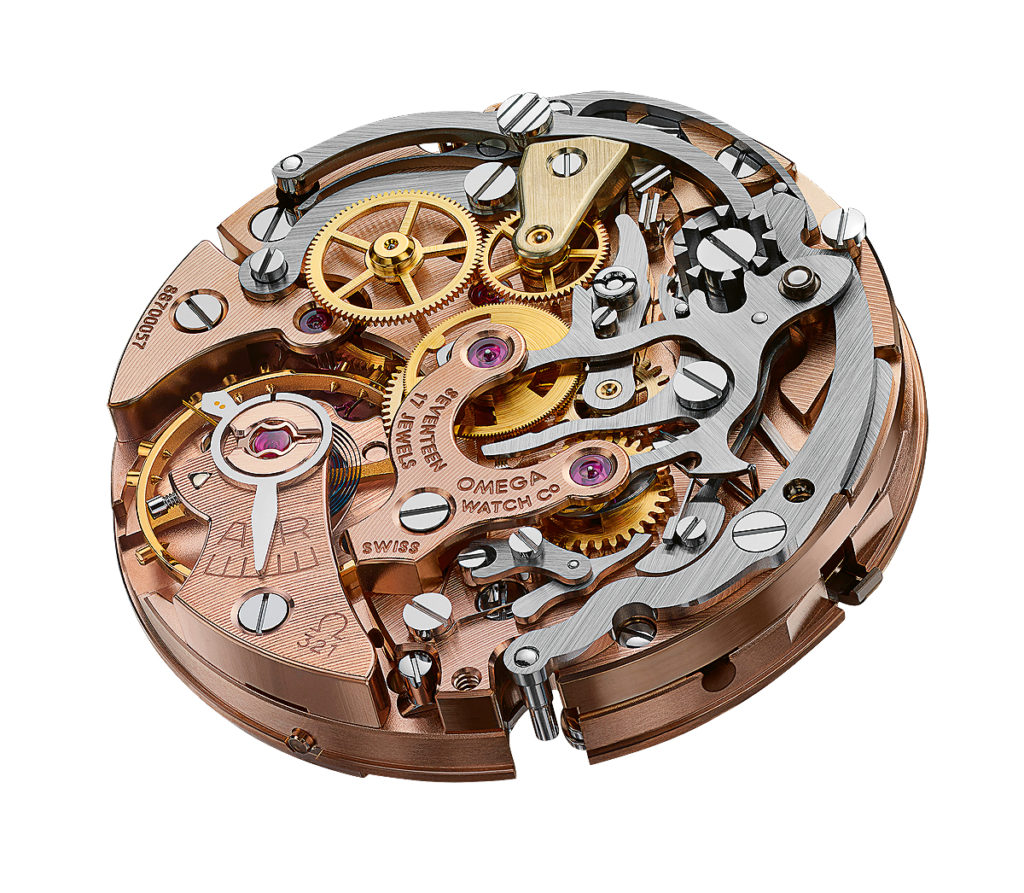
Speedmaster Moonwatch 321
White’s Speedmaster Ref. 105.003 still had a symmetrical case without a flared flank to protect the push-pieces and crown. As a result, the lugs were nearly straight and didn’t have the typical sinuous shape with upturned flanks that would appear later. This straight-line design inspired the case of the new Speedmaster Moonwatch 321, which was introduced in 2020.
The bracelet of the new edition also has historical origins. The first Speedmaster from 1957 was equipped with a no-frills, three-row, stainless-steel bracelet. This wristband would characterize the function-oriented design of the Moonwatch for decades and was only replaced much later by a more elaborate five-row metal bracelet.
Other references to the watches of the Apollo astronauts are the so-called “Step Dial” with recessed subdials and the “Dot over Ninety,” which refers to a peculiarity of the tachymeter bezel on the early Speedmaster generations, where the 90 is below the corresponding dot rather than beside it. This “error” was corrected in the model series released in 1968 and thereafter.
The case diameter of 39.7 mm is also historically correct. Omega has allowed itself only a few modernizations, all of which improve the watch’s robustness and longevity. One update is a ceramic inlay, which replaces the original aluminum scale on the bezel. Another new detail is a pair of sapphire crystals: one crystal takes the place of the plastic pane that originally covered the dial; the other replaces the opaque metal back of the historical model. Ironically, this technical improvement would prevent the watch from being recertified as an item of NASA equipment because a sapphire crystal can shatter under extreme low pressure and potentially injure the astronauts or damage their equipment. That’s why the Speedmaster Moonwatch Professional shown at the end of this article — the watch worn by American astronauts — is still available today with a plastic crystal and a metal caseback.
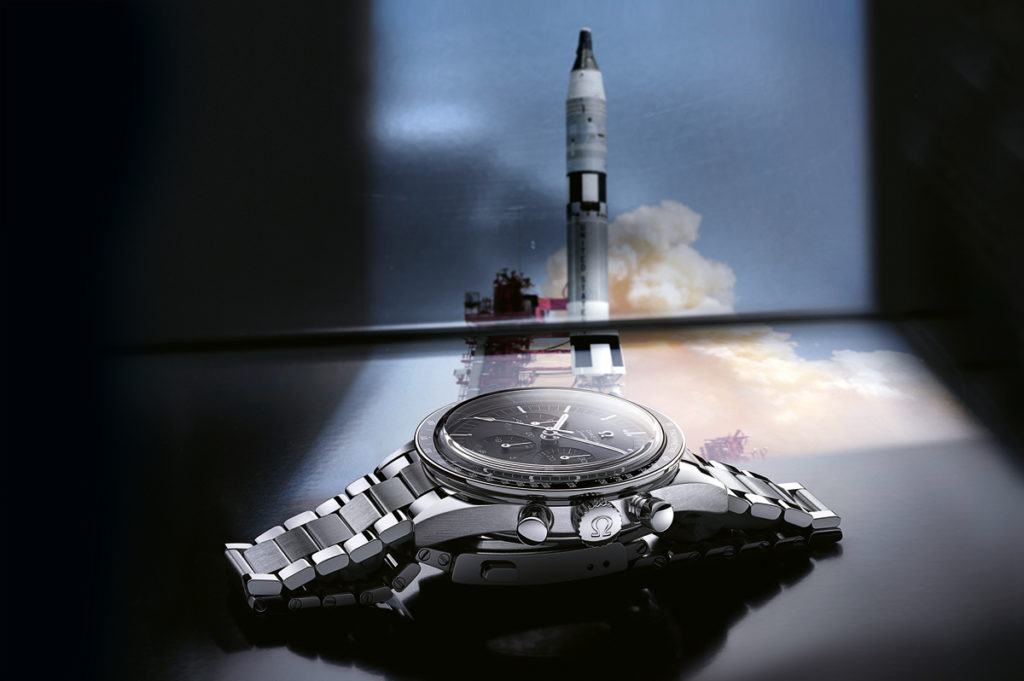
Cult Caliber 321
Our editorial team saw the two sapphire crystals of the Speedmaster Moonwatch 321 as an advantage. The one in the caseback is particularly welcome because it lets connoisseurs admire Caliber 321 and many of its handsome details. During the two years of research and development work that Omega devoted to this project, specialists consulted the old construction plans and also used computer tomography (CT) to examine the direct ancestor of our test watch, the Speedmaster Ref. 105.003 that Cernan wore over the sleeve of his spacesuit when he became the last person to walk on the moon as part of the Apollo 17 mission in 1972.
Caliber 321 was developed in a specially equipped atelier, where an individual watchmaker assembled one watch from start to finish. It debuted in 2019 inside the Speedmaster Moonwatch 321 Platinum, which has eye-catching subdials made of meteorite.
When you look through the sapphire crystal in back of the case of our test watch, you can see the movement’s traditional construction with exposed chronograph mechanism, a column wheel to control the stopwatch’s functions and horizontal geared coupling to connect the chronograph’s mechanism to the power train. All of the chronograph’s levers are made of matte-brushed stainless steel, while the bridges and cocks – including the spring of the Incabloc shock protector on the balance’s staff – are PVD-coated and crafted from Sedna gold, Omega’s own rose-gold alloy. The surfaces in historical Caliber 321 were electroplated, but this resulted in uneven fading of the rose-gold tone. The brushed-matte cock of the coupling wheel has a contrasting color because, like its counterpart in the original movement, it’s made of nickel silver, an alloy combining copper, nickel and zinc. In a horizontal coupling, the coupling wheel connects the continuously running fourth wheel to the chronograph’s center wheel when the chronograph is switched on.
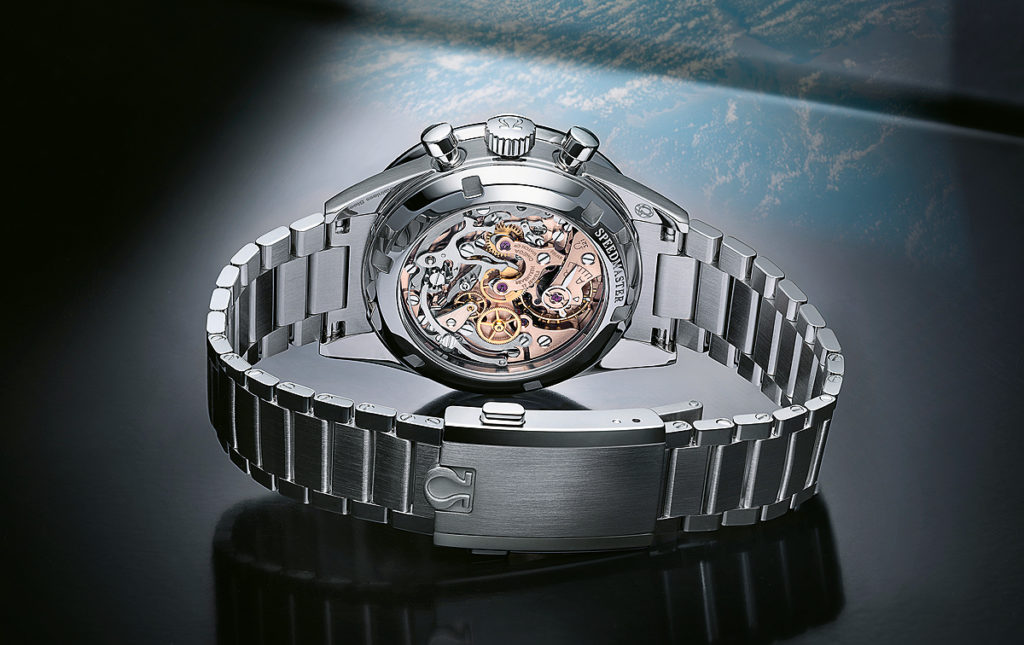
Historical Features
Gold-plated brass wheels, a classic screw balance and a long regulator arm complete the traditional look of Caliber 321. Of course, a free-sprung balance with variable inertia would ordinarily replace the simple regulator arm in a newly developed movement, but Omega wanted to build a true-to-life replica of the original caliber, which was used from 1949 to 1968.
This quest for historical authenticity also explains the absence of a stop-seconds mechanism: the second hand continues to run when the crown is pulled out, which makes it difficult to set the time accurately. But if you want to set this model with to-the-second accuracy, you can use a trick. Begin by pulling the crown out and turning the minute hand past the desired time. Now wait for the second hand to reach the zero mark on its subdial, then turn the minute hand backward to the desired minute index and hold the crown in this position so it exerts gentle pressure against the gear train, thus keeping the second hand motionless. When a radio-controlled timekeeper announces the start of the next full minute, push the crown in — to-the-second time setting.
Despite the movement’s traditional construction, its rate values are quite convincing. The small average daily deviation of +0.3 seconds, measured by our timing machine, is excellent. The watch performed almost equally well on the wrist, where the deviations ranged between -2 and +1 second per day, albeit with a slight tendency toward the minus column. Only the clearly recognizable difference of 12 seconds among the individual positions forced us to subtract a few points in compliance with the strict rules of our watch tests.

Quality and Utility
The Speedmaster Moonwatch 321 has an impeccably crafted stainless-steel case with a markedly protruding sapphire crystal, a second pane of sapphire in the back of the case, and enameled calibrations on the ceramic bezel. The bezel towers over the case, which is part of the Speedmaster’s iconic design, but unfortunately, together with the chronograph’s closely spaced push-pieces, this makes turning and especially pulling the crown difficult. Furthermore, although the zero-reset button clicks smartly when triggered, the start-stop push-piece has a less distinct pressure point, which somewhat reduces the enjoyment of using the chronograph function.
Fortunately, the flawlessly crafted dial with sensibly subdivided scales and well-chosen hand lengths compensates for the minor inconveniences of setting and operating this wristwatch chronograph. The hour markers and the central hands glow in the dark and the small luminous area at the tip of the elapsed-seconds hand doesn’t detract from legibility. Starting the chronograph in the dark awakens the luminous arrowhead and sends it sweeping around the dial, thus confirming the fact that the watch is still running.
The glow of the narrow luminous strips on the hands and hour markers is surprisingly strong and long lasting. Omega opted for Super-LumiNova in a vintage beige color, which ordinarily doesn’t provide a generous dose of luminosity, but the indicators nonetheless shine in a clearly recognizable green — and they keep glowing until dawn. Legibility is even better at night than during the day because depending on the angle of incident light, the sapphire crystal sometimes reflects glaringly in daylight, despite the anti-reflective coating on its underside.
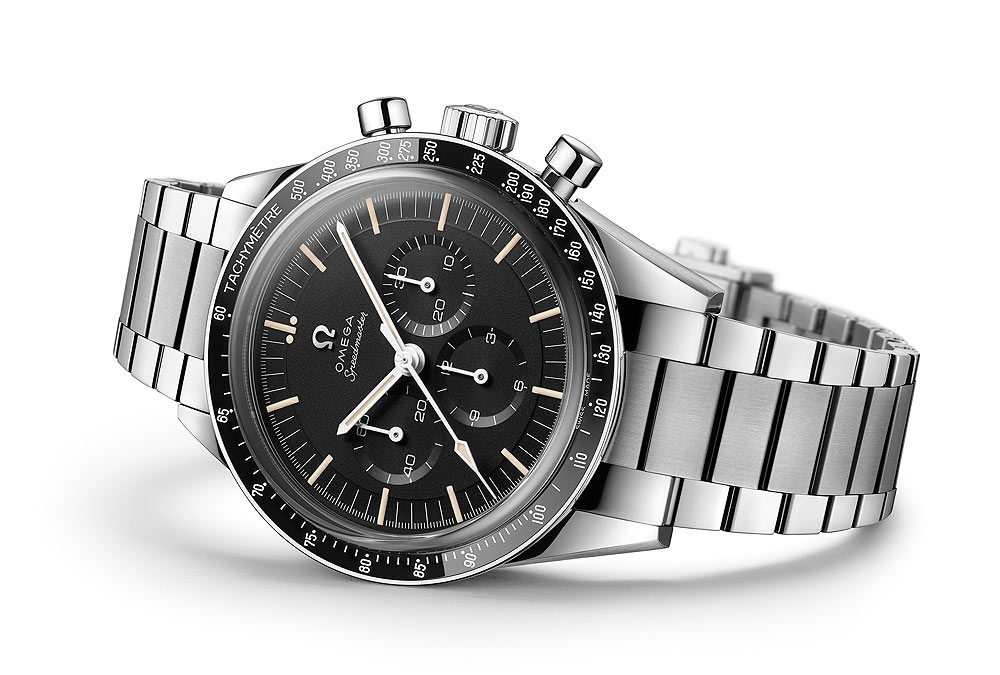
Comfort on the Wrist
Thanks to its moderate diameter and richly detailed case, this 39.7-mm-diameter and 14-mm-tall wristwatch is not only well proportioned, it also is very comfortable on the wrist. The same is true of the tapered, three-row steel bracelet, which has the necessary stability with pins screwed on both sides and a folding clasp milled from a solid block of metal.
Like its counterparts in the 1960s, the clasp is handsomely adorned with a 3-D Omega logo and can be opened by pressing its buttons. And as in the past, the bracelet has no quick-extension mechanism, but the clasp offers the option of extending the wristband’s attachment point outward by 2.5 mm. A pointed object is needed to accomplish this adjustment, but at least it offers the wearer the option of adjusting the bracelet’s length, for example, on warm days, without having to unscrew individual links.
Historical considerations prompted Omega to keep the bracelet somewhat plain, but its quality is nonetheless high. The same high quality is evident throughout the entire watch. On the other hand, considering its price of $14,100, potential buyers should ask themselves whether this model’s advantages are sufficient to make them shun a “normal” Moonwatch, Ref. 311.30.42.30.01.005, which costs $5,350. As a direct comparison, the new model has two sapphire crystals instead of a plastic crystal and a steel caseback, its bezel is made of ceramic with enameled calibrations rather than easily scratched aluminum, and last but not least, the movement of our test watch is not only visible, but also more beautiful, constructively superior and historically more significant than its counterpart in the original timepiece. Above all, the Speedmaster Moonwatch 321 recalls a model that accompanied the spacewalk and the moonwalk, two milestones in the history of space exploration. This might not make a would-be buyer forget all about the high price, but it does illuminate the price tag in a less glaring light —in the soft glow of moonlight, so to speak.
SPECS:
Manufacturer: Omega S.A., Stämpflistrasse 96, 2504 Bienne, Switzerland
Reference number: 311.30.40.30.01.001
Functions: Hours, minutes, subdial for continually running seconds, central elapsed-seconds hand, subdials for up to 30 elapsed minutes and 12 elapsed hours
Movement: Omega Caliber 321, hand-wound, 18,000 vph, 17 jewels, conven-tional escapement, temperature-blued steel hairspring, column-wheel, horizontal coupling, fine adjustment via regulator arm, Incabloc shock protection, 55-hour power reserve, diameter = 27 mm,
height = 6.7 mm
Case: Stainless-steel case, ceramic bezel with enamel tachymeter scale, domed sapphire crystal with anti-reflective coating on the underside, fully threaded caseback with window of sapphire; water resistant to 50 m
Bracelet and clasp: Stainless-steel bracelet with secure folding clasp that opens on one side
Rate results (deviations in seconds per 24 hours, with chronograph switched off/on):
Dial up +6 / +5
Dial down +6 / +6
Crown up -3 / -5
Crown down -1 / -1
Crown left 0 / +1
Crown right -6 / -7
Greatest deviation 12 / 13
Average deviation +0.3 / -0.2
Average amplitude:
Flat positions 328° / 310°
Hanging positions 259° / 241°
Dimensions: Diameter = 39.7 mm, lug width = 19 mm, height = 14 mm, weight = 118 grams
Price: $14,100
SCORES:
Bracelet and clasp (max. 10 points): The bracelet is impeccably crafted. The clasp is milled from a solid block of metal and snaps shut smartly. The clasp lacks a quick-extension mechanism, but you can lengthen the bracelet via a spring bar. 8
Operation (5): The crown is difficult to reach under the overhanging bezel and between the closely spaced push-pieces. The pressure point atop the start-stop button isn’t clearly defined. 2
Case (10): The stainless-steel case with enameled ceramic bezel and two sapphire crystals is complexly
shaped and flawlessly finished. 9
Design (15): Visually successful and well pro-portioned; the dial’s simplicity gives the watch its cult character. 15
Legibility (5): The contrast is perfect, the calibrations make sense and the luminous material glows for a long time, but the crystal reflects strongly. 4
Wearing comfort (10): This model is very comfortable to wear thanks to the moderate case diameter and the supple bracelet. 9
Movement (20): Omega faithfully reproduced the historical hand-wound movement with its recognizable chronograph mechanism that has a high-quality column wheel, gold-plated bridges and traditional gear coupling. But it has no stop-seconds mechanism and only a simple regulator. 16
Rate results: (10): A gain of 0.3 seconds is perfect, but 12 seconds is quite a large number for the maximum deviation among the several positions. 7
Overall value (15): Omega has brought back a historic cult watch, but it also has a very high price of $14,100. 11
Total: 81 POINTS




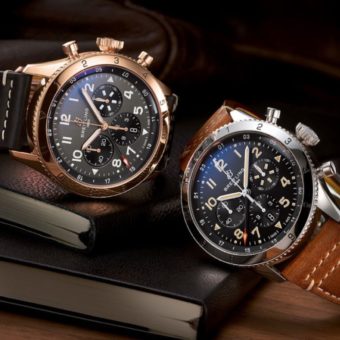
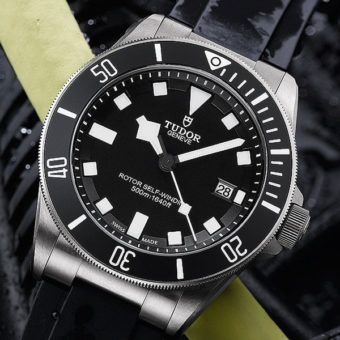

Rien à dire excellente analyse professionnellement détaillée et critique constructive et impartiale.
Merci
Believe it or not, I was also going to throw out my 1968 Tudor Submariner…! The same watch dealer encouraged me to have it brought back to life, and the strap is also being given the suitable attention that it deserves….
My daily wear now is a Bremont or a 1982 R. GMT. …
I was about to throw my Ed White . Over 90 away, a chance conversation with my favourite watch shop led to it being sent off to Switzerland for a sympathetic service & repair….Wish that I’d kept the box, papers & broken strap…but Heyho, it may bring in a couple of ‘bob’ if I can find a buyer.
Like John Morgan’s but a year earlier ..
I’m worried u have a lot of negative comments about non delivery
A good article on the Speedmaster 105.003. I bought mine back in 1967 while stationed in Germany. The new 321 got me thinking about buying one until I saw the price-$14,100.00! Think I’ll keep mine.